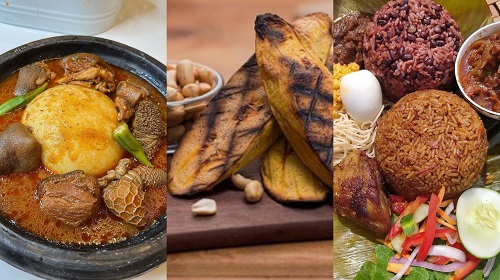The national average cost of a healthy diet (CoHD) for the first quarter of 2025 is GH¢15.11.
Per the regional statistics, the Western Region has the highest CoHD with GH¢21.29 while the Ahafo Region has the lowest of GH¢9.83.
The figures indicate the minimum amount an individual has to pay for food to meet the national dietary guidelines.
The national average for CoHD for 2024 was GH¢12.29, higher than that of 2023, which was GH¢10.70.
Western Region recorded the highest CoHD for 2024 with GH¢17.75, followed by Greater Accra Region’s GH¢17.50, with the Ahafo Region recording the lowest of GH¢9.17.
In 2023, the Western North Region recorded the minimum CoHD of GH¢8.20.
This came to light at a dissemination workshop organised by the Ministry of Food and Agriculture (MOFA) in Accra last Thursday.
The one-day workshop was also used to launch the first quarter 2025 new series of a MOFA bulletin known as Cost of a Healthy Diet.
Done with technical support from the Tufts University of the United States, the bulletin provides critical insights into access to healthy diets across the various regions of the country.
Cost of a Healthy Diet
Ghana’s Food-Based Dietary Guidelines define a healthy diet for Ghanaians.
![]()
Cost of a Healthy Diet looks at the minimum cost of food required to meet the daily nutritional goals outlined in the country’s food-based dietary guidelines. When people are unable to afford the minimum of CoHD, it means they do not have sufficient access to food.
A Deputy Director, Statistics, Research and Information Directorate of MOFA, Eunice Arhin, who presented the results of the study, said the data was obtained from retail price data collated by MOFA from about 190 markets across the country.
She said the data collection was done on a weekly basis, and at the end of each month, regional averages were computed to enable them to have the regional monthly average price for each commodity.
Throwing more light on the data, Ms Arhin said the study also looked at the food group which drove most cost and that happened to be vegetables and animal source foods while oils and fats food group had the least cost share of one per cent.
For the top three least cost items for each food group, Ms Arhin said starchy staples and white maize topped the list, followed by dried cassava chips, otherwise known as kokonte, and yellow maize in that order.
For fruits, the frequently selected least priced items were fresh coconut, avocado pear and pawpaw, while the vegetable food group comprised alefu, carrot and kontomire.
Animal source foods were made up of kako, salted dried tilapia, otherwise known as koobi, and mutton.
“Within each food group, the items that are selected as least cost would vary depending on the cost, availability and region or location,” she explained.
Importance
On the importance of the data, she said the government could use it to set the minimum wage for workers.
Similarly, when it comes to the school feeding programme, she said policymakers could use it as a guide to set how much could be allocated per person per day.
A Co-Director, Food Prices for Nutrition at Tufts University, Dr Anna Herforth, said the project was designed to work within existing systems and, therefore, started with initial workshops in Ghana and Tanzania in 2016.
She said realising that data on more diverse foods would be needed for indicators about nutritious diets, the MOFA decided to pilot an expanded food list in early 2017.
The acting Chief Director of MOFA, Paul Siameh, said a healthy diet was the foundation for a productive life, influencing everything from childhood development to the management of chronic diseases.
However, he said many Ghanaians faced the challenge of accessing nutritious food, adding that the rising cost of healthy diet options posed a significant barrier, particularly for the vulnerable.

